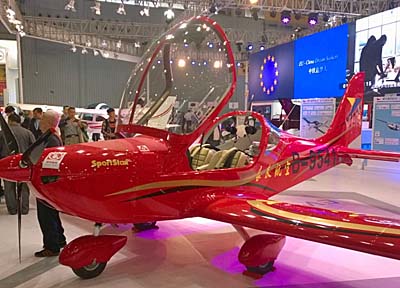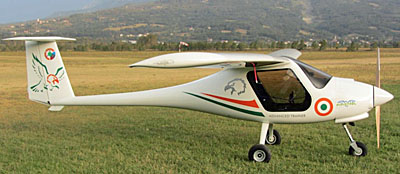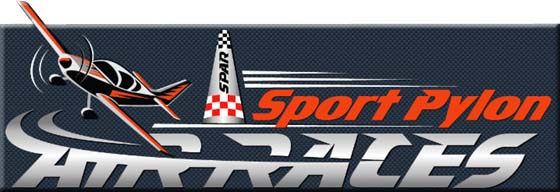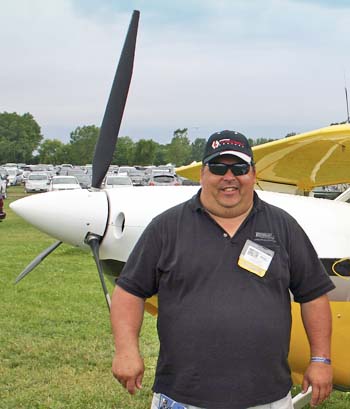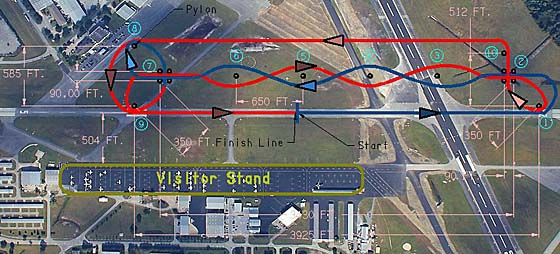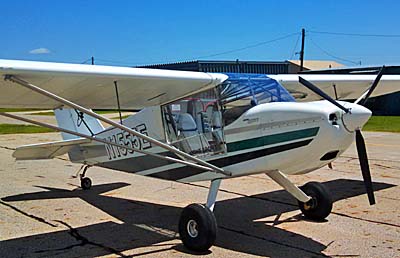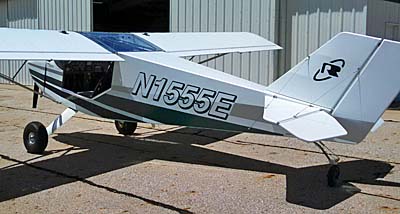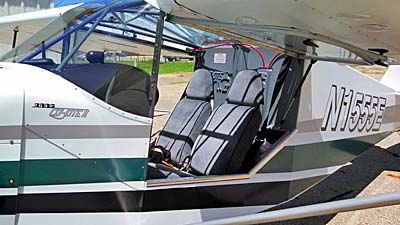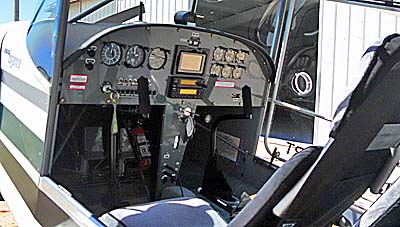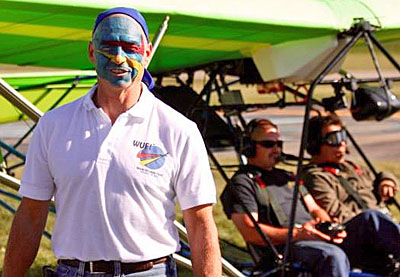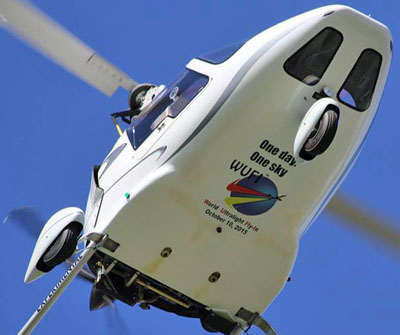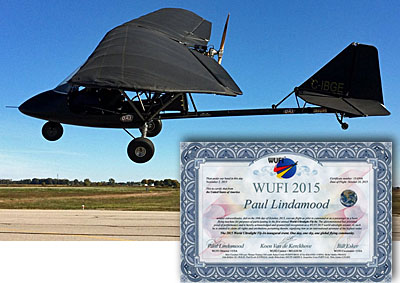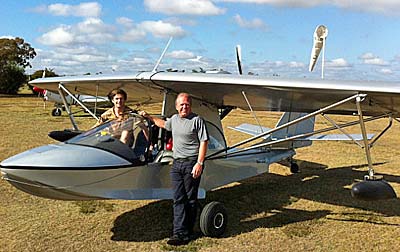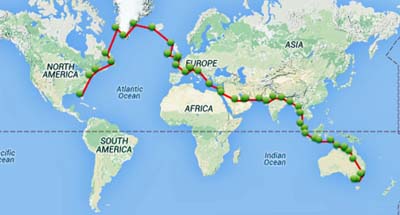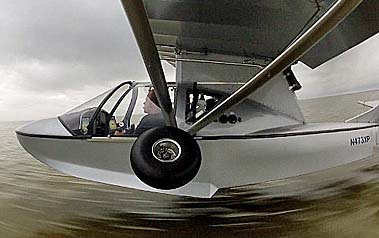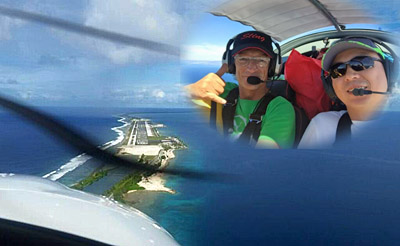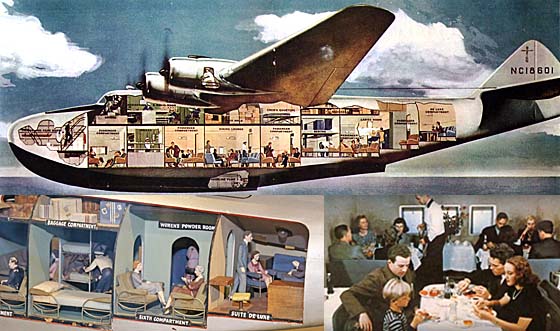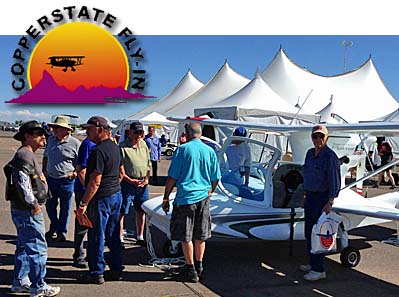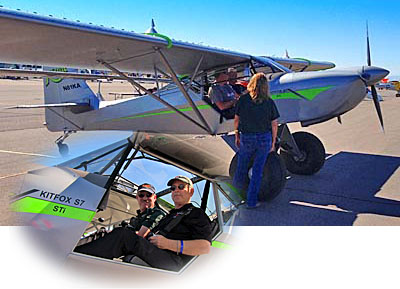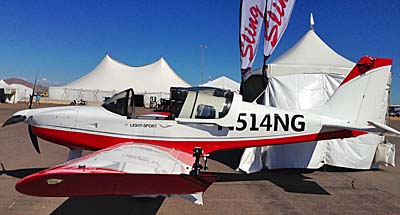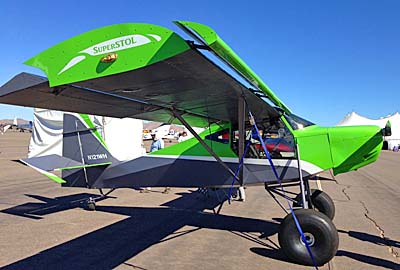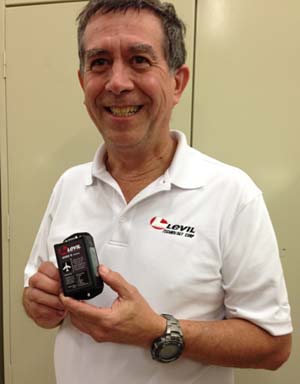
If you ever read newspapers or watch network news, you can hardly avoid hearing about the meltdown in Venezuela following the early 2013 death of Hugo Chavez. That Cuba-emulating country was taken over by Nicolás Maduro and things deteriorated quickly. I start the story of Levil this way as I recently visited their Oviedo, Florida facility and I had to wait until proprietor Ruben Leon returned from travel. When I arrived at Levil headquarters I found he had returned to his former home, Venezuela, to vote in the elections. The elections won by the opposition served notice on the Maduro administration that his countrymen are fed up and want change. How this all relates to the business of Light-Sport Aircraft products is a tale of one man’s resolve and determination. I found it fascinating and hope you will, too. After completing his education, Ruben sought work in a country where finding a good job can be a challenge.



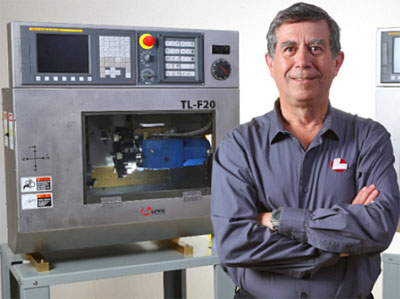
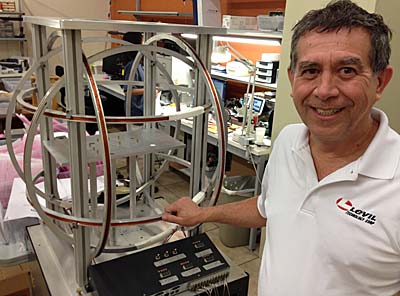

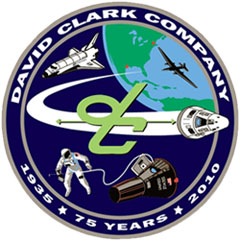
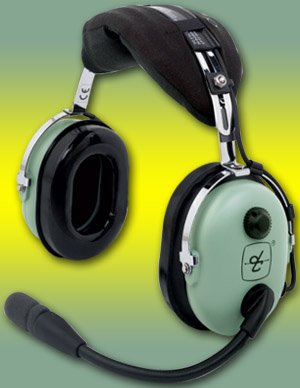



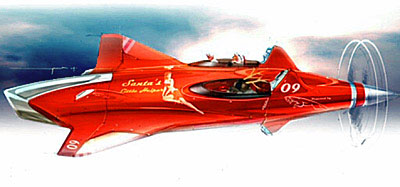

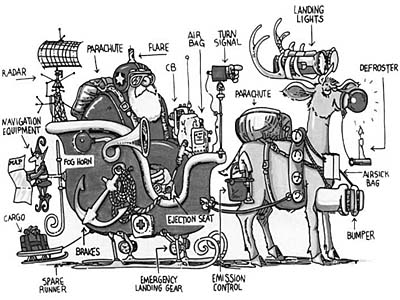

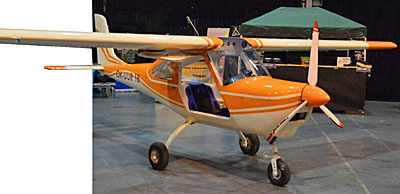
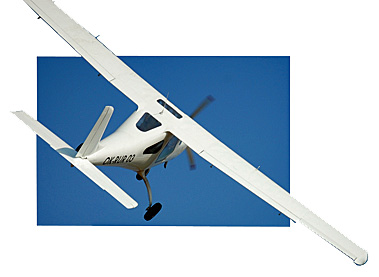


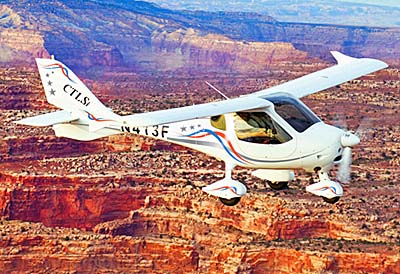


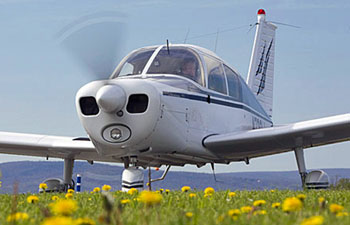

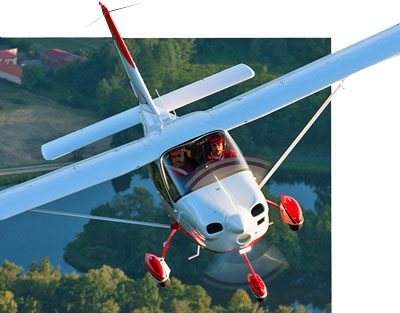 After more than a decade of LSA, one airframe manufacturer stands head and shoulders above all other in what I call the "light aircraft space." That term gets stretched far and wide with this update on Costruzioni Aeronautiche Tecnam ... simply "
After more than a decade of LSA, one airframe manufacturer stands head and shoulders above all other in what I call the "light aircraft space." That term gets stretched far and wide with this update on Costruzioni Aeronautiche Tecnam ... simply "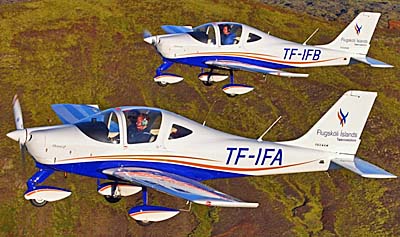 Earlier the Italian manufacturer reported earning EASA (Europe's FAA) certification for their handsome four seater called
Earlier the Italian manufacturer reported earning EASA (Europe's FAA) certification for their handsome four seater called  All Tecnam LSA use the Rotax brand of engines but with their P2010 model Tecnam demonstrated their commitment to a "greener" future by confirming EASA approved use of automobile gas for all Tecnam P2010 airplanes. "Mogas fuel ensures Tecnam P2010 flyers will benefit from more cost effective operations and produce significantly lead free emissions," the company reported. Selection of Lycoming IO-360M1A to power their P2010 four-seater was mainly a result of its ability to burn alternative fuels other than avgas.
"All Tecnam two and four seat, single and twin engines aircraft, are now able to operate with environment friendly fuels, especially mogas, containing up to 2,000 times less lead than 100LL," boasted Tecnam.
Lycoming Engines was equally enthusiastic. "In achieving [EASA approval], Tecnam's P2010 became the first known OEM fixed-wing aircraft fully approved by the manufacturer to use each and every fuel listed in our SI1070 Approved Fuels document," said Michael Kraft, Senior VP and General Manager of Lycoming Engines.
Tecnam Managing Director Paolo Pascale confirmed the benefits: "This provides the consumer with a great number of fuel options on the aircraft, and especially unleaded options which are not only better for the environment, but better for the engine."
Tecnam still isn't done and Professor Luigi has rested yet.
All Tecnam LSA use the Rotax brand of engines but with their P2010 model Tecnam demonstrated their commitment to a "greener" future by confirming EASA approved use of automobile gas for all Tecnam P2010 airplanes. "Mogas fuel ensures Tecnam P2010 flyers will benefit from more cost effective operations and produce significantly lead free emissions," the company reported. Selection of Lycoming IO-360M1A to power their P2010 four-seater was mainly a result of its ability to burn alternative fuels other than avgas.
"All Tecnam two and four seat, single and twin engines aircraft, are now able to operate with environment friendly fuels, especially mogas, containing up to 2,000 times less lead than 100LL," boasted Tecnam.
Lycoming Engines was equally enthusiastic. "In achieving [EASA approval], Tecnam's P2010 became the first known OEM fixed-wing aircraft fully approved by the manufacturer to use each and every fuel listed in our SI1070 Approved Fuels document," said Michael Kraft, Senior VP and General Manager of Lycoming Engines.
Tecnam Managing Director Paolo Pascale confirmed the benefits: "This provides the consumer with a great number of fuel options on the aircraft, and especially unleaded options which are not only better for the environment, but better for the engine."
Tecnam still isn't done and Professor Luigi has rested yet.
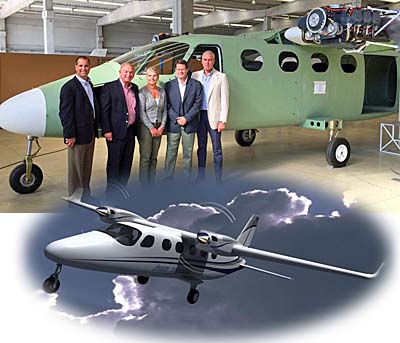 P2012 Traveller is the company's eleven-seat next generation piston engine twin, designed to comply with both FAR part 23 and EASA CS-23 and to ensure operators benefit from very low operating and maintenance costs in particular.
Recently, launch customer, commuter airline operator Cape Air conducted an on-site joint production development meeting at Tecnam's Capua, Italy assembly facility. An encouraged Cape Air president Linda Markham (photo) said, "We look forward to continuing our collaboration.
P2012 Traveller serial number 003 is now complete with its twin Lycoming TEO 540-C1A engines fitted. The largest Tecnam is undergoing extensive testing of its fuselage, wing and empennages.
P2012 Traveller will first do service as a passenger airplane, Tecnam said, but it was designed for multiple roles including "Hydro, VIP, cargo shipping, parachuting, and medevac services."
Since it is not wise to take your eye off Tecnam for too long we will keep reporting the latest developments.
P2012 Traveller is the company's eleven-seat next generation piston engine twin, designed to comply with both FAR part 23 and EASA CS-23 and to ensure operators benefit from very low operating and maintenance costs in particular.
Recently, launch customer, commuter airline operator Cape Air conducted an on-site joint production development meeting at Tecnam's Capua, Italy assembly facility. An encouraged Cape Air president Linda Markham (photo) said, "We look forward to continuing our collaboration.
P2012 Traveller serial number 003 is now complete with its twin Lycoming TEO 540-C1A engines fitted. The largest Tecnam is undergoing extensive testing of its fuselage, wing and empennages.
P2012 Traveller will first do service as a passenger airplane, Tecnam said, but it was designed for multiple roles including "Hydro, VIP, cargo shipping, parachuting, and medevac services."
Since it is not wise to take your eye off Tecnam for too long we will keep reporting the latest developments.
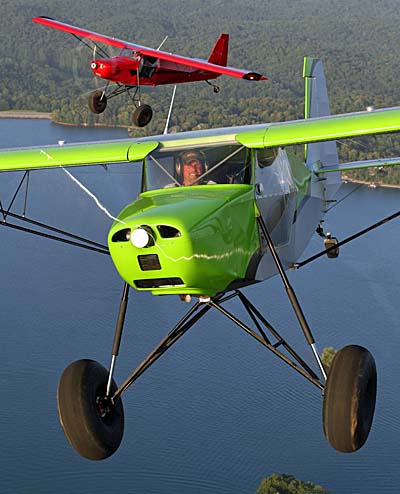


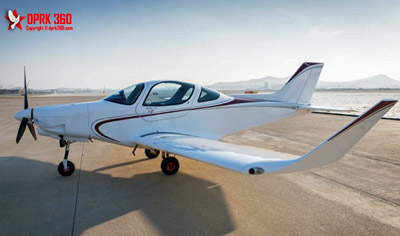
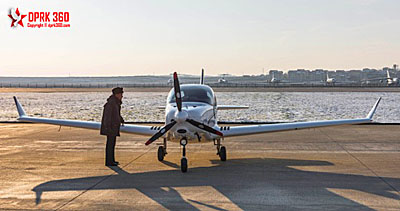
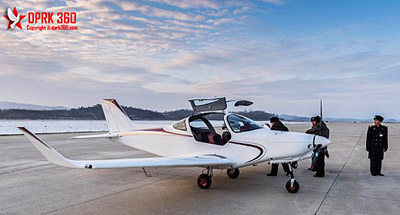
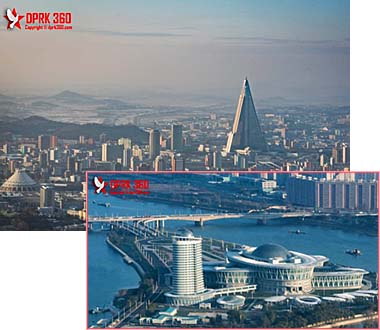



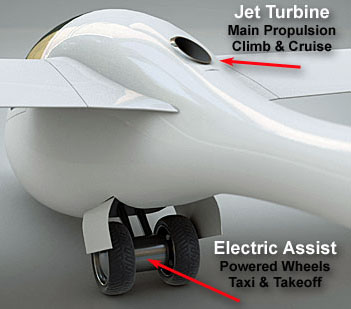
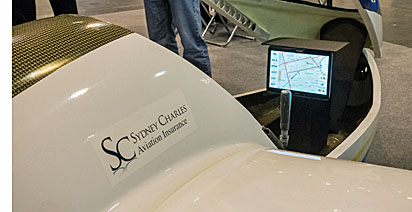

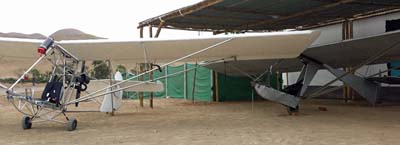 I've also written about the $16,000 (or so) fully-built
I've also written about the $16,000 (or so) fully-built 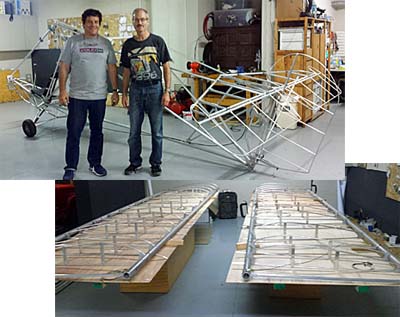 Let's jet down to Lima Peru and visit the project. Nearby images show the Zigolo going together and taking flight over Peru.
"Zigolo was built from a kit in only 15 days in the basement garage of the owner Marco Peter," said Chip. The finished aircraft was then transported to a small desert airstrip just south of Lima for the test flight.
"The mission was to finish the Zigolo build, test fly, and show Marco how to fly all in the short term of Nov 3 to 23, 2015. That's just 20 days less two Sunday afternoons off to watch the Packers," said Chip. He hails from Florida these days, but grew up in Wisconsin and those Packer loyalties run deep and last long. Even with time out for football, Chip reported, "This mission was accomplished with a day to spare."
First test flights were made by Chip with Marco making several flights in his new ultralight motorglider afterward but all in the short window of time. For another perspective on how Zigolo flies,
Let's jet down to Lima Peru and visit the project. Nearby images show the Zigolo going together and taking flight over Peru.
"Zigolo was built from a kit in only 15 days in the basement garage of the owner Marco Peter," said Chip. The finished aircraft was then transported to a small desert airstrip just south of Lima for the test flight.
"The mission was to finish the Zigolo build, test fly, and show Marco how to fly all in the short term of Nov 3 to 23, 2015. That's just 20 days less two Sunday afternoons off to watch the Packers," said Chip. He hails from Florida these days, but grew up in Wisconsin and those Packer loyalties run deep and last long. Even with time out for football, Chip reported, "This mission was accomplished with a day to spare."
First test flights were made by Chip with Marco making several flights in his new ultralight motorglider afterward but all in the short window of time. For another perspective on how Zigolo flies, 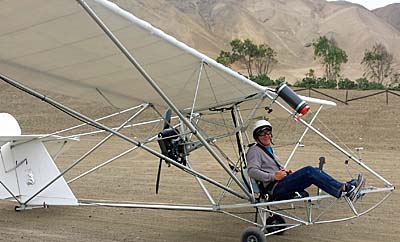 The mission proved the Part 103-capable Zigolo can be built as quickly as advertised. What Chip didn't mention was the bargain price of the machine.
As we told you at its first U.S. appearance — see the second half of
The mission proved the Part 103-capable Zigolo can be built as quickly as advertised. What Chip didn't mention was the bargain price of the machine.
As we told you at its first U.S. appearance — see the second half of 
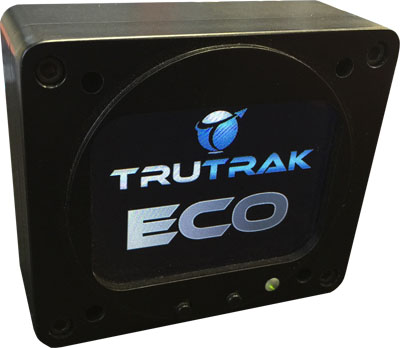
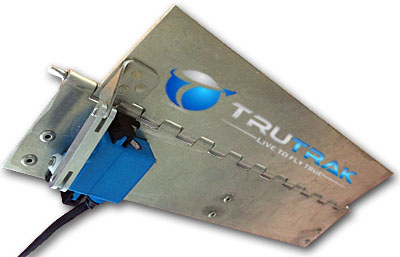


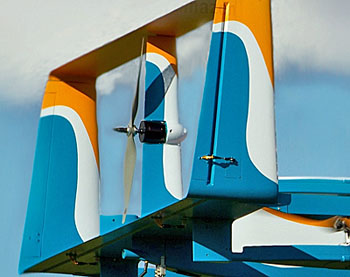
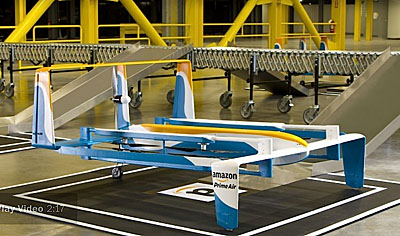

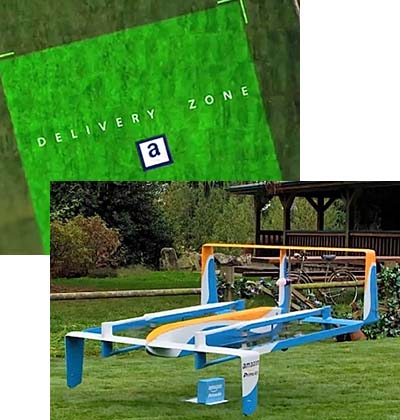

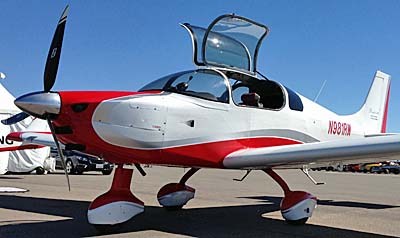 As I've indicated many times in the last couple years, this website seeks to deliver news and video about Light-Sport Aircraft, light kit aircraft, ultralights, and light GA aircraft. The latter refers to four seat (and larger) aircraft created by the same companies that make LSA or kits. Specifically, I do not plan much on Cessna, Piper, Cirrus, Diamond, and other legacy brands as every magazine already examines these every month. Instead, I plan to cover emerging models from companies that established their brand in the LSA space:
As I've indicated many times in the last couple years, this website seeks to deliver news and video about Light-Sport Aircraft, light kit aircraft, ultralights, and light GA aircraft. The latter refers to four seat (and larger) aircraft created by the same companies that make LSA or kits. Specifically, I do not plan much on Cessna, Piper, Cirrus, Diamond, and other legacy brands as every magazine already examines these every month. Instead, I plan to cover emerging models from companies that established their brand in the LSA space: 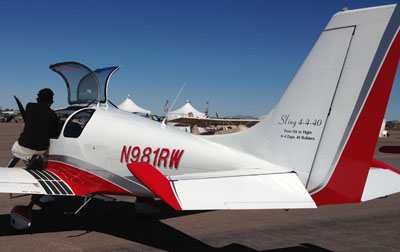 At Copperstate 2015, I finally got a chance to fly the Sling 4 from The Airplane Factory, which I had been anticipating since enjoying the Sling LSA. The South African company has a rich history in light aircraft, with principal Mike Blyth flying weight shift trikes all over the world, including several epic journeys. He certainly "gets" all manner of light aircraft and sought to make a four seater, which, of course, he also flew around the world. Such voyages a something of a habit for Mike.
Sling 4 uses
At Copperstate 2015, I finally got a chance to fly the Sling 4 from The Airplane Factory, which I had been anticipating since enjoying the Sling LSA. The South African company has a rich history in light aircraft, with principal Mike Blyth flying weight shift trikes all over the world, including several epic journeys. He certainly "gets" all manner of light aircraft and sought to make a four seater, which, of course, he also flew around the world. Such voyages a something of a habit for Mike.
Sling 4 uses 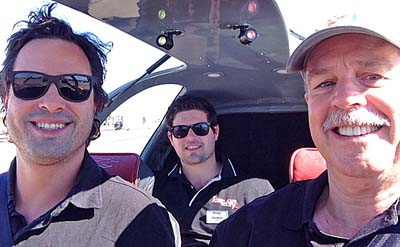 Naturally, as TAF-USA entrepreneur Matt Litnaitzky also represents the
Naturally, as TAF-USA entrepreneur Matt Litnaitzky also represents the 
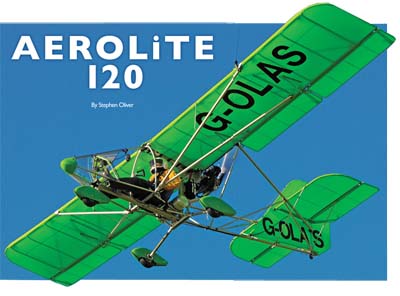 So much for too-costly airplanes.
So much for too-costly airplanes.  Vierwerk and their United Kingom (including Ireland) distributor
Vierwerk and their United Kingom (including Ireland) distributor 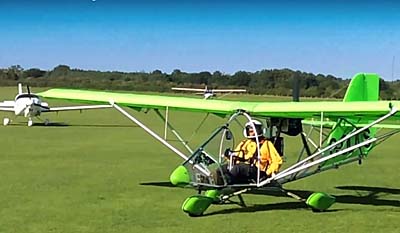 Some of Stephen's comments from the article are selected below.
"For a very light aircraft (only 120 kilograms (264 pounds) and a MTOW of 250 kilograms (550 pounds), the Aerolite 120 carries little momentum, so she responds rapidly to control inputs and airspeed bleeds off very quickly; consequently, you have to keep the power on to some extent right through to the flare." I don't find that to be the case, but I have plenty of light aircraft experience, unlike Stephen.
"[On takeoff] I applied full power from the Polini Thor 200 Evo air-cooled engine, which had easily started first time, every time, and I steadily climbed flapless out of the airfield, heading north over Pitsford. Best rate of climb is 41 knots (47 mph), which gives 1.6 meter per second (320 fpm) [of climb]; that's pretty much with full power at over 7200 rpm, [while] keeping a close eye on the temperatures.
"With so little weight, even with me on board, there's little momentum to slow its response to control inputs; it all makes for a lively experience. The stall is quite benign at 35 knots (39 mph) clean."
Much more detail appears in Stephen's full-length report found at the link above. Also, you can watch a video below for the first flight of Aerolite 120 in England.
Some of Stephen's comments from the article are selected below.
"For a very light aircraft (only 120 kilograms (264 pounds) and a MTOW of 250 kilograms (550 pounds), the Aerolite 120 carries little momentum, so she responds rapidly to control inputs and airspeed bleeds off very quickly; consequently, you have to keep the power on to some extent right through to the flare." I don't find that to be the case, but I have plenty of light aircraft experience, unlike Stephen.
"[On takeoff] I applied full power from the Polini Thor 200 Evo air-cooled engine, which had easily started first time, every time, and I steadily climbed flapless out of the airfield, heading north over Pitsford. Best rate of climb is 41 knots (47 mph), which gives 1.6 meter per second (320 fpm) [of climb]; that's pretty much with full power at over 7200 rpm, [while] keeping a close eye on the temperatures.
"With so little weight, even with me on board, there's little momentum to slow its response to control inputs; it all makes for a lively experience. The stall is quite benign at 35 knots (39 mph) clean."
Much more detail appears in Stephen's full-length report found at the link above. Also, you can watch a video below for the first flight of Aerolite 120 in England.
